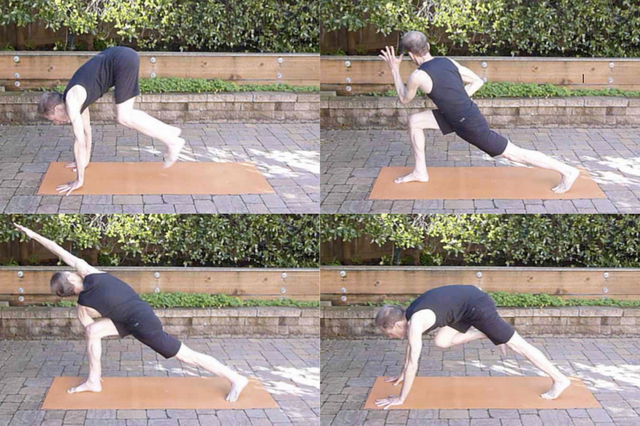Dear Yoga Friends,
Spring is upon us, and some of us may feel the need to emerge from our dens, forage for food, research allergy remedies, and yes, move a little more. Two years ago, also not-so-coincidentally in the spring, I wrote to you about a venture into a more dynamic and playful practice. Since then I have found myself taking an occasional vinyasa approach to my practice, and I will be teaching a workshop on this topic at IYISF on Saturday, May 18th. Here are my answers to a few questions curated by IYISF staff member Misea Denéa:
How would you define vinyasa?
Vinyasa is a Sanskrit word composed of the syllables vi meaning "separating" and nyasa meaning "placing or positioning". So it literally means break apart and put in place, or "sequencing", which is core to the Iyengar method. Timing is also core to the Iyengar method. Whether quick or slow, sequencing is a huge piece of what we do in Iyengar yoga.
Many people think that the Iyengar method involves holding poses longer and does not involve flow. What are your views on flow vs. holding?
I agree that flow is not core to Iyengar yoga and that holding a pose and working on correct actions is more central. But Gita talked about mobility as a key ingredient in addition to stability. "Flow" emphasizes mobility, movement, transitions. Iyengar yoga is known for safely entering and exiting an asana. I would distinguish between "flow" and "vinyasa". "Flow" does not convey the same quality of intelligent sequencing. Movement is part of life and must be recognized in yoga. Emphasis on movement has value during certain moments in our practice and phases in our lives.
Can one still find stability in asana with vinyasa as the focus?
Yes. Look at Guruji's practice over time. Early videos document incredible transitions linking arm balances, backbends, padmasana variations, and many other poses—so humbling! As Guruji's practice evolved, he came on to longer hold times, but this took insight and maturity. You can hold a pose for different lengths of time, but you always need a range of movement to find the pose. You don't just lock in to a pose. There is citta vrtti, unsteadiness, movement. Movements need to be stilled through progressive tuning and fine-tuning to reach stability. Holding a pose longer can provide more opportunity to stabilize, but time is relative. In jumpings you hit the pose, find it the best you can, and move on. This can be a way of practicing—not for everybody or for every day, but something we can fruitfully explore in Iyengar yoga.
Can you say a few words about your upcoming May workshop incorporating vinyasa?
We'll visit different categories of poses and examine how vinyasa fits within the Iyengar yoga framework. We'll look at entry/exit from an asana and how that's a type of vinyasa. We'll work on surya namaskar and variations. There will be a strong emphasis on sequencing based on linked actions from pose to pose. People sometimes get injured in flow classes. Iyengar yoga offers safety, and we'll discuss healthy actions and safe ways to move. Yoga is fundamentally a serious inner journey, but there can be a playful aspect. Watch a children's class where there is falling, laughing, and getting back up—that can be part of the practice too. We'll explore some of the range of possibilities within this big tent that we call Iyengar yoga.
Whether or not you can join us next month, I hope you find some value in these ideas and welcome your comments as always!
Namaste,
Chad


